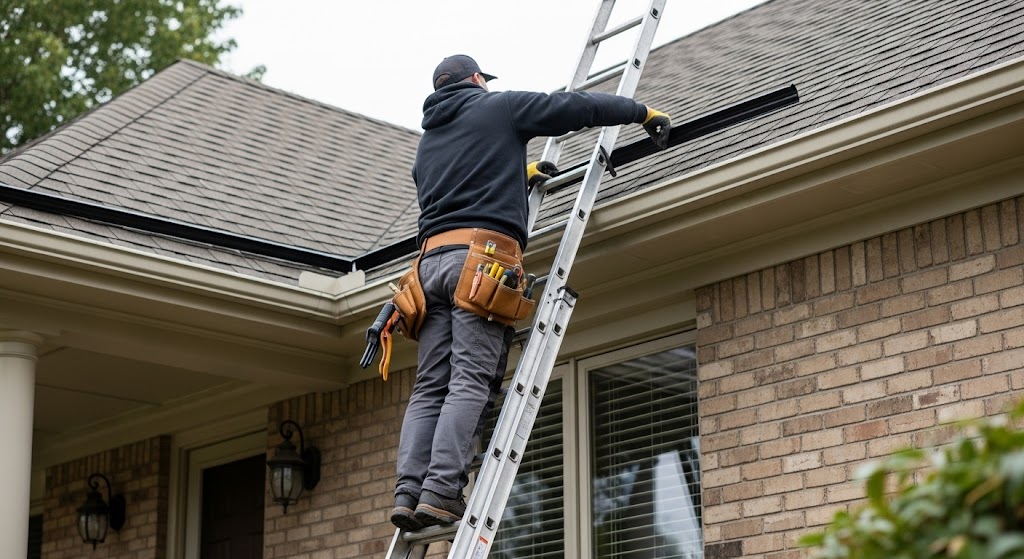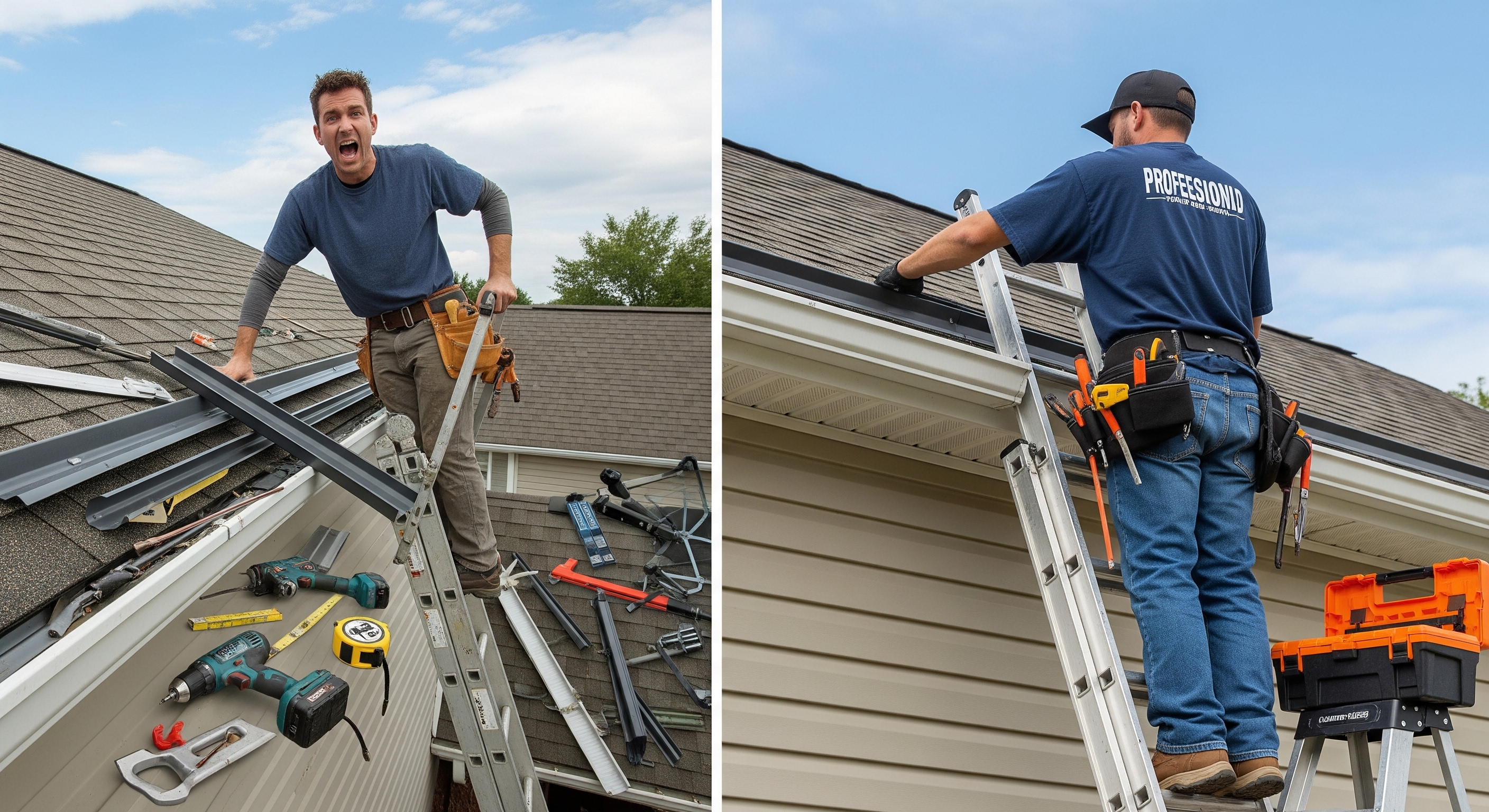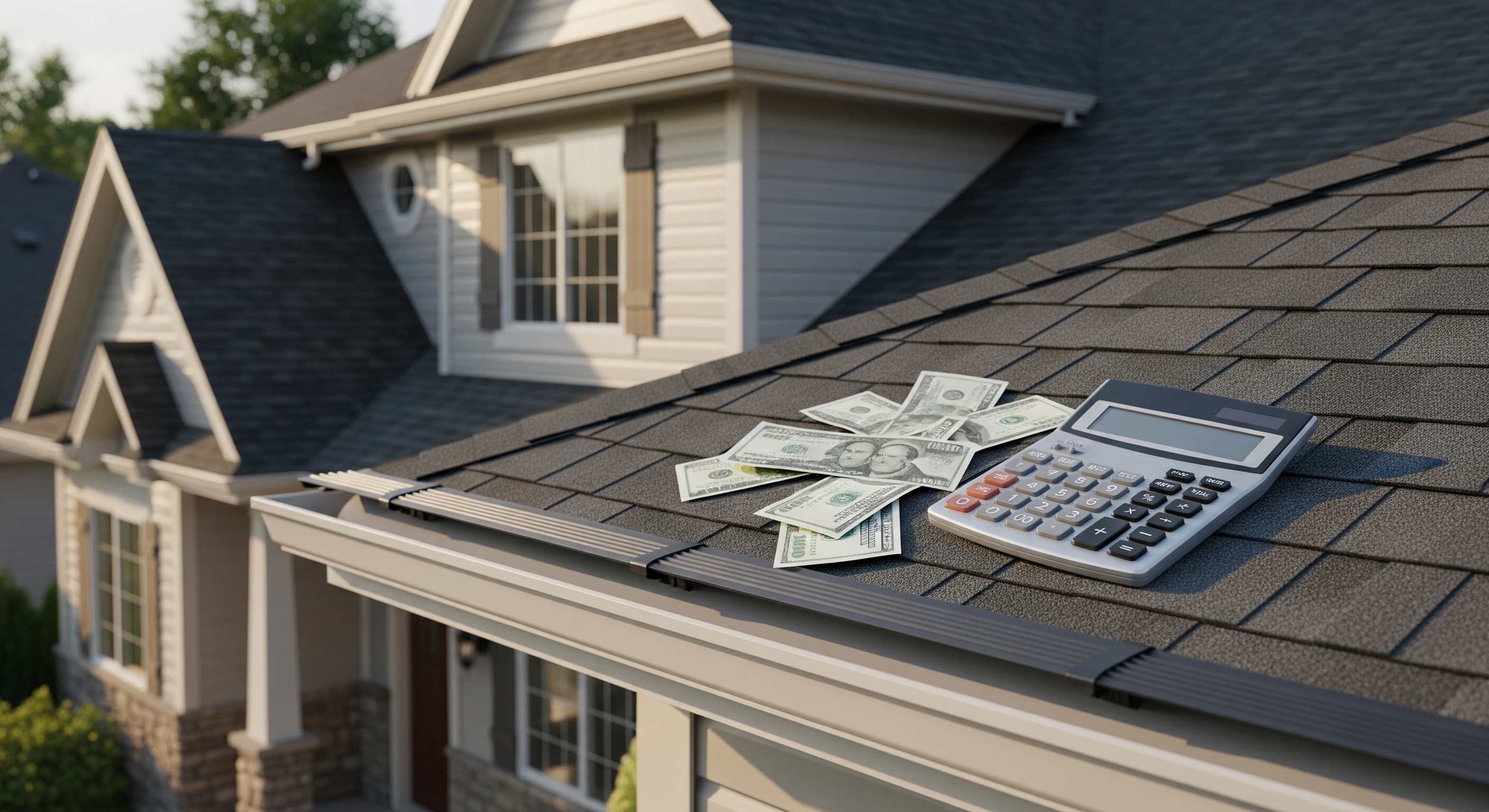Gutter guard installation stands as a vital component of proactive home maintenance, shielding properties from water damage and debris buildup. In this step-by-step guide, readers gain insight into the professional methods used by expert teams to achieve lasting protection. Each phase, from preliminary inspections to final testing, showcases industry best practices and specialized tools. By understanding this process, homeowners appreciate the value of precision and reliability in safeguarding their roof line and foundation.
How do you install a gutter guard?
Gutter guard installation begins with a thorough assessment of the existing gutter system to identify damage, sagging, or improper pitch. This initial evaluation ensures that any necessary gutter repairs or fascia reinforcements are completed before fitting the guard material. Professionals then select the correct guard profile—whether micro-mesh stainless steel, aluminum screen, or foam insert—based on the home’s climate, tree cover, and water flow requirements. Accurate measurements of gutter length and width guide precise cuts and seamless joins. Throughout, the goal remains to maintain unobstructed water drainage while blocking leaves, pine needles, and other debris.
Preparation and Inspection
Before materials arrive on site, the installer inspects downspouts, hangers, and gutter seams for leaks or corrosion. Sagging sections are re-secured with additional brackets to restore the proper slope toward downspouts. Faulty fasteners and rusted bolt holes receive fresh sealant and stainless steel screws to withstand future weathering. This proactive repair work extends the lifespan of both the gutters and the guards, preventing premature failure. A clean, sturdy base ensures a flush fit and eliminates the risk of gaps where debris could infiltrate.
Measuring and Planning
Accurate measurements form the blueprint for every professional gutter guard installation service. Technicians mark each gutter section at defined intervals, accounting for overlaps and miter cuts around corners. When working with curved rooflines or valleys, they adapt guard lengths with precision snips or powered metal shears. A careful layout plan minimizes material waste and reduces time on the ladder. By pre-cutting segments in the staging area, installers avoid unnecessary trips up and down, enhancing both safety and efficiency.
What is a professional gutter guard installation service?
A professional gutter guard installation service combines skilled labor, quality materials, and industry-grade tools to deliver long-term protection. Expert teams handle every detail, from gutter cleaning and rust treatment to custom fabrication of guard sections. Trained technicians understand how to integrate shields under roof shingles without compromising the weather seal. They also accommodate various guard styles—such as reverse-curve surface tension systems or bristle-style brush guards—selecting the optimal solution for each property. Throughout, communication with homeowners clarifies material choices, warranties, and maintenance recommendations before work begins.
Cleaning and Repairing Existing Gutters
The first hands-on step of any professional gutter guard installation process involves clearing all debris from the channel. Technicians use trowels, brushes, and high-pressure water jets to remove leaves, twigs, and sediment that accumulate over seasons. During this cleaning phase, they flush the system with water to confirm proper pitch and drainage. Any minor leaks discovered at joints or seams are sealed with high-performance gutter sealant designed for UV exposure and temperature swings. This restoration work ensures that guards attach to structurally sound gutters, avoiding future drainage issues.
Selecting the Right Guard Material
Material selection plays a critical role in the effectiveness of a gutter guard installation service. Stainless steel mesh filters fine particles down to pollen and shingle grit, making it ideal for heavily wooded properties. Aluminum screen systems balance durability with cost efficiency for average debris levels. Foam inserts provide a budget-friendly solution for homeowners willing to perform periodic maintenance brushing. Surface tension guards leverage physics to redirect water along a curved deflector, shedding leaves and pine needles down the roof face. By matching guard type to environmental conditions, professionals optimize water flow and guard longevity.
What steps are involved in the gutter guard installation process?
Gutter guard installation process follows a structured workflow that guarantees consistency and quality control. Professionals start by aligning guard sections along the gutter lip, ensuring the front leaf lip locks under the gutter edge securely. Each panel receives stainless steel screws or specialized clips at manufacturer-specified intervals to prevent wind uplift and shifting. At every joint, installers apply a waterproof sealant bead, eliminating potential leak paths. Finally, integrators conduct a water test using a hose to simulate rainfall, confirming that water channels smoothly through guard perforations into the gutter trough without spilling over.
Securing the Guard Sections
Once panels are positioned, installers use corrosion-resistant fasteners to anchor them firmly to the gutter. The choice of fastener—self-tapping screws, snap-in clips, or stainless steel rivets—depends on guard design. Professionals avoid lifting roofing shingles or damaging the roof’s weather barrier by tucking guard flanges under existing drip edges. High-torque cordless drills with depth-control settings ensure screws seat properly without over-penetration. Throughout this step, technicians maintain even spacing to support panel integrity and prevent sagging under snow load.
Sealing and Testing
After fasteners are in place, sealing every seam and end cap prevents water from bypassing the guard system. Installers apply a weather-grade silicone or polymer sealant that remains flexible through freeze-thaw cycles. In corners and valley sections, they reinforce the barrier with pre-molded corner pieces or cut-to-fit miter connectors. The final inspection includes running 50 feet of water through the roof edge, checking for any overflow or infiltration behind the guard. Any adjustments—tightening clips or adding sealant—are completed immediately to achieve a perfect water-tight installation.
Comparison of Gutter Guard Types
| Guard Type |
Material |
Debris Exclusion |
Durability |
Approx. Cost per Linear Foot |
| Mesh Screen |
Stainless Steel or Aluminum |
Pollen, leaves, shingle grit |
Very High |
$7–$12 |
| Foam Insert |
Closed-cell Polyurethane |
Large leaves, twigs |
Medium |
$3–$6 |
| Surface Tension |
Coated Aluminum |
High-capacity debris deflection |
High |
$9–$15 |
| Brush (Bristle) |
Plastic Bristles on Steel Core |
Large debris but clogs brush |
Low |
$4–$7 |
Why choose professional gutter protection installation?
Opting for professional gutter protection installation ensures that homeowners receive a tailored solution backed by warranties and expert oversight. Certified technicians understand local climate challenges—whether heavy snow loads, ice dams, or high pollen counts—and recommend the appropriate guard style. A professional service typically includes manufacturer warranty on materials and labor guarantees for installation quality. This approach minimizes callbacks and reduces lifecycle maintenance costs. When comparing quotes, homeowners should consider long-term performance rather than just upfront fees.
In many cases, customers consult professional Gutter Guard Installation vs. DIY analyses to decide between hiring a team and tackling the task themselves. Seasoned installers highlight safety benefits, precision cutting, and adherence to building code, which amateurs often overlook. By investing in certified professionals, households avoid the hidden risks of ladder falls, improper sealing, and guard misalignment.
How much do gutter guards cost?
Average pricing for gutter guard installation varies based on guard material, gutter length, and property complexity. Simple foam inserts start around $3 per linear foot, while premium micro-mesh systems can reach $15 per foot. Additional charges may apply for major gutter repairs, fascia replacement, or roofline modifications. Homeowners can estimate total project costs using detailed quotes from reputable contractors that outline material, labor, and any applicable permits. For more granular breakdowns and cost-saving tips, explore gutter guards cost resources that compare per-foot pricing across multiple guard types.
Professional vs. DIY Installation Comparison
| Feature |
Professional Installation |
DIY Installation |
| Safety |
Certified technician with fall protection equipment |
Homeowner risk with personal ladder setup |
| Precision |
Precise measurements, custom cuts, sealed seams |
Potential for miscuts and leaks |
| Warranty |
Full material and labor warranty |
Limited or no warranty on installation |
| Time |
Typically completed in 1 day for average home |
Can take several weekends |
| Long-Term Cost |
Predictable lifecycle cost, fewer callbacks | Why regular maintenance matters
Even the most robust gutter guard installation demands periodic inspection to sustain optimal performance. Seasonal checks—especially after heavy leaf fall or spring pollen—ensure debris doesn’t accumulate on top of guards. Clearing dried leaves or pine needles from mesh surfaces prevents clogging and maintains smooth water flow. Technicians recommend an annual inspection to tighten any loose fasteners and reapply sealant if needed. Connecting this guidance with Gutter Guard Installation best practices helps homeowners maximize return on investment and preserve their roof’s integrity.
Conclusion
By following a systematic, professional approach to gutter guard installation, homeowners can trust in durable debris protection and reliable water management. From detailed inspections and precise measurements to expert fastening and rigorous testing, each step embodies industry standards for excellence. For residents seeking peace of mind and long-term performance, Home Defender USA delivers superior service combining quality materials, certified installers, and comprehensive warranties. Embracing professional gutter guard installation not only saves time on maintenance but safeguards the foundation and siding for years to come.
Frequently Asked Questions
What types of debris can gutter guards block?
Gutter guards effectively filter out leaves, pine needles, shingle grit, and small debris while channeling rainwater into the downspouts. Mesh systems excel at stopping fine particles, while surface tension guards deflect larger debris off the roof edge.
How long does a professional gutter guard installation take?
On average, a typical single-story home can receive complete gutter guard installation within one day. Complex rooflines or multi-story properties may require two days, including cleaning, repairs, and thorough water testing.
Do gutter guards eliminate all gutter cleaning?
While gutter guards dramatically reduce debris entry, they do not completely eliminate maintenance. Occasional clearing of debris from the guard surface prevents buildup and maintains optimum flow during heavy storms.
Can gutter guards help prevent ice dams?
Yes. By ensuring consistent water flow and reducing standing water in gutters, gutter guards minimize the risk of ice forming along the gutter lip, which contributes to ice dam formation under roof shingles.
Are there warranties on gutter guard installations?
Most professional installations include manufacturer warranties on materials—often 20 to 25 years—and labor guarantees that cover installation defects, ensuring homeowner protection and peace of mind.
For personalized estimates or to schedule a consultation, please Contact Us. To learn more about our journey and commitment to quality, visit About US.
Madison’s unique climate puts gutter systems through extremes of heat, cold, rain, and snow. Homeowners who notice bending channels, pulled-away brackets, or sections hanging perilously from the roofline often wonder if gutter repair in Madison is a job best left to professionals.
Gutter Repair in Madison is a critical service for homeowners navigating the city’s fluctuating climate. Whether it’s torrential spring rains, summer storms, autumn leaf fall, or Wisconsin’s notorious winter ice, a well-maintained gutter system protects foundations, roofs, siding, and landscaping.
Madison homeowners know that managing rainy springs, scorching summers, vibrant falls, and frigid winters demands a resilient gutter system. Gutter Repair in Madison often becomes an urgent topic when ice dams threaten roofs or overflowing downspouts flood basements.
Gutter Repair in Madison is an essential consideration for homeowners navigating Wisconsin’s variable climate. Madison’s distinct seasons—from spring rains to winter snow and ice—place gutters under constant stress, making timely repairs vital.
Gutter guard installation can transform a homeowner’s rainy season routine by preventing clogs, molds, and foundation damage. When rainwater management becomes a chore rather than a convenience, it’s often a clue that proactive measures are overdue. Debris buildup, from leaves to pine needles, accelerates corrosion and leaks in unprotected gutters.
Gutter guard installation can seem straightforward at first glance, but the nuances between a professional job and a DIY approach are significant. Professionals bring years of experience, ensuring correct slope, secure fastening, and material compatibility with various roof types. DIY projects often start with savings in mind, yet they can incur hidden labor, equipment rental, and potential repair costs if mistakes occur.
When homeowners research affordable solutions to protect their roofs and foundations they often focus on gutter guard installation from the start. Installing a high-quality gutter guard system can prevent clogs, reduce maintenance, and safeguard against water damage. As the cost of gutter guard installation gains attention it becomes crucial to understand the variables that shape price estimates, from material type to labor rates and regional factors.
Home exteriors face a trifecta of challenges: incessant pine needle buildup, torrential downpours, and the risk of ice dams on cold-weather roofs. Debris accumulation can lead to clogged downspouts, water overflow, and structural damage. Selecting a gutter guard system that tackles fine pine needles, channels heavy rain without spillover, and minimizes ice dam formation is essential for lasting roof and foundation protection.
Gutter guards protect roofs by keeping debris out of your drainage system, yet they still need regular attention. Ignoring maintenance can lead to clogged screens, water overflow, and damage to fascia and foundations. A well-planned clean gutter guards schedule helps homeowners prevent costly repairs and preserve curb appeal. This guide covers optimal cleaning frequencies, a seasonal checklist, and professional “pro hacks” to simplify upkeep.
Investing in professional gutter guard installation often appears as a single line item on a homeowner’s maintenance budget. Yet, beyond the obvious debris block, there are surprising financial and structural advantages that manifest over years. By tapping into expert gutter protection, homeowners safeguard their property, increase ROI, and minimize hidden costs that DIY solutions can’t address.
Homeowners weighing the decision between installing gutter guards themselves or hiring experts face a complex cost equation. For a typical 2,500-square-foot home, understanding material prices, labor rates, and long-term benefits is essential. This deep dive compares DIY gutter guard cost vs professional, breaks down the average cost of gutter guards for 2,500 sq ft home, and outlines how to project your gutter guard budget accurately.
In 2025, the cost to install gutter guards has continued to vary based on material selection, home size and regional labor rates. Third-party data indicate that professional gutter guard installation ranges from $6 to $13 per linear foot, inclusive of material and labor charges. Homeowners should view this as a starting point for budgeting their project.
Foam gutter guards promise a do-it-yourself solution to clogged gutters, but homeowners often find that the inexpensive material comes with a hidden price. Despite easy installation and low upfront costs, foam inserts tend to underperform when it comes to longevity, debris resistance, and water flow management. In this article, the core reasons why foam gutter guards fail will be examined, and smarter, more durable alternatives will be presented in a clear, professional tone that any homeowner can understand.
As homeowners seek to protect their roofing investment, the showdown between hooded (surface-tension) and mesh gutter guards intensifies. Each design leverages distinct engineering one harnesses water adhesion, the other filters debris through fine openings. This analysis examines performance, materials, installation, and maintenance to guide informed decision-making.
Proper gutter protection is vital for preventing water damage, foundation issues, and costly repairs. Among available solutions, micro-mesh gutter guards stand out for their precision filtration and durability. These fine mesh systems use stainless steel mesh guards to block debris while allowing water to flow freely. Investing in a micro-mesh solution can save time, extend gutter lifespan, and reduce maintenance.
Gutter guards prevent leaves, twigs, pine needles, and debris from clogging rain gutters, safeguarding roofs, foundations, and siding. By installing the right guard, homeowners reduce maintenance, avoid water damage and curb erosion. Each type of gutter guard uses different materials and designs—mesh, micro-mesh, reverse curve, screen, foam, and brush to channel rainwater while keeping debris out.
Gutter protection services reduce maintenance costs by preventing debris buildup, limiting water damage, and decreasing repair frequency. Companies like Home Defender Remodeling have found that investing in quality gutter protection significantly lowers long-term repair bills by keeping debris, insects, and water away from vulnerable areas.
Madison homeowners face seasonal threats that challenge their home’s durability heavy rains, falling leaves, snow buildup, and pest invasions. Without an efficient gutter system, these issues can quickly lead to costly structural damage. That’s where the best gutter protection from Home Defender USA comes in. Designed to reduce debris buildup and maintain smooth water flow, these systems protect your home’s roof.
Gutter guards, including defense gutters, are essential for keeping your home’s gutters free from clogs and debris, protecting your roof, foundation, and exterior. Homeowners in Wisconsin especially in Dane and Milwaukee counties know that an efficient gutter system is critical to avoid costly repairs and water damage.
Homeowners in Madison, WI face unique challenges when protecting their property against unpredictable weather and seasonal changes. For instance, many local residents have found that installing gutter protection madison wi can mitigate water damage from overflowing gutters or clogs, which may lead to structural issues like foundation cracks, basement flooding, and roof deterioration.

Start Your Home Improvement
Journey Today
Ready to put these tips into action? Contact Home Defender for expert advice and top-notch services for your gutters, windows, roofing, and more.

















.jpg)











